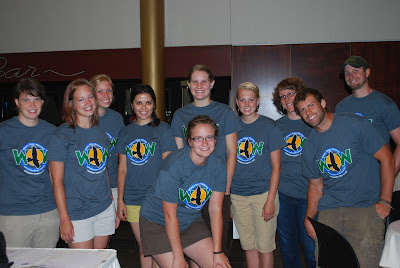We have spectacular news on the lead filled loon!
Our staff & loon breathed a sigh of relief at the Antigo Veterinary Clinic this past week
as an operation was completed to remove the lead sinkers. We crossed our
fingers as the loon underwent a procedure that has only been completed a handful
of times in avian rehabilitation history!!! This blog is a recap of the procedure, recovery, and RELEASE!!!!!!
For those of you who are not aware of the loon's story, he was found washed up in a marina unaware of his surroundings. Upon being admitted to the REGI clinic, the loon's blood lead levels were so high our device had no way of knowing what the true level was, and the X-ray a day later confirmed our fears. The loon had 2 lead sinkers in its gizzard. A death sentence for any loon not brought in for treatment. To add to the loons growing list of problems, he came in with a severe case of avian botulism.
The loon upon arrival into the REGI clinic. Lethargic, thin, and extremely high lead levels
X-rays at the vet clinic showed 2 lead fishing sinkers in the loon's gizzard
Loon eyes are a beautiful maroon color. Not too often can you see them so closely. This individual loon is beginning to molt it's feathers
Lead poisoning is treated with several series of daily
injections, and can take anywhere from weeks to months to see real results
depending on the species and how severe the case is.
After a week of trying everything in our power to get the sinkers out, we knew that it was time to take some drastic measures for this bird to have a chance at recovery. We brought the loon in to the Antigo Veterinary Clinic and thus began a physically and emotionally grueling afternoon. The loon was sedated as a tube was fed through its mouth and down to its stomach. Water was then rushed through the tube and into the loons system where it began to pop out pebble, after pebble, after pebble. Just as it seemed like the treatment would show no results, lone behold, 2 lead sinkers sat among the rocks on the table.
The air in the room was tense, but a huge wave of relief flooded the REGI and vet clinic staff.
IT GETS BETTER!!!!!
IT GETS BETTER!!!!!
After monitoring his progress and declining lead levels this week, he was released today (8/17) by the interns! His release is a huge relief to the REGI crew. "I've never seen a loon that close before," said intern Molly. Neither had the rest of the REGI interns. To see a loon that close means that they really are feeling down-in-the-dumps. Loons, for obvious reasons, don't fair well in captivity, and we are happy to see him headed home to the open water!
The following is a string of photos from the procedure, recovery, and release
After arrival at the veterinary clinic, the loon was carefully sedated by veterinarian Sarah with help from our Turkish veterinarian Aysegul & interns Molly and Sarah
Veterinarian Sarah feeds the tube into the loon's mouth. Water will be pushed through the tube in hopes of pushing out the two lead sinkers
Oxygen is given to the loon following the procedure
After the procedure, Turkish veterinarian Aysegul checks the loon's vitals as interns Alyssa, Molly, and Sarah hope for a successful recovery
The two sinkers and one of the several rocks that were pushed out of the loon's system
After fully waking up from the anesthesia, the loon quickly returned to fishing for minnows in the REGI clinic
It's a great feeling to be able to watch the loon catch fish knowing there's no lead sinkers left in his system. He makes quick work of a tub filled with minnows
The Antigo Vet Clinic team accompanied by interns Alyssa, Molly, and Sarah, executive director Marge Gibson, and our visiting Turkish veterinarian Aysegul! GREAT JOB LADIES!
Interns Alyssa, Molly, Sarah, and Turkish veterinarian Aysegul wishing the loon safe travels!
Please, please, please think about switching to non-lead
tackle & ammunition.
Cases like this are 100% preventable, and YOU have the
power to change it!
For alternatives to lead tackle click here.
For alternatives to lead ammunition click here.
A HUGE thank you to the Antigo Veterinary Clinic for their hard work and patience through this case and the countless others that they have helped us out with.
- Katie Rymer, Assistant Avian Rehabilitator
















































